Germany’s Edge — The Dual-Purpose 88mm Gun
The German 88mm dual-purpose gun is quite possibly the most famous — or infamous — weapon of World War II. Its destructive power quickly became legendary among all Allied forces, and by the end of the war in Europe, there were few Allied servicemen, infantry, tankers or aircrew that had not cursed it.
When I began researching this article, I imagined that I might do some “myth-busting” about the 88mm guns. Spoiler alert: what I found was quite the opposite, and only reinforced its mythical status. For the “88”, it was a deadly reputation well earned.
Before World War II
The weapon has its origins in the successful towed anti-aircraft guns of World War I: the 8.8cm K-Zugflak L/45 (Krupp) and the 8.8cm K-Zugflak L/45 (Rheinmetall) — essentially the same gun, but with different mounts and carriages. Both types entered service in late 1916, and by the end of the Great War Rheinmetall had developed a gun battery control system that used linked optical rangefinders. The result was greatly increased accuracy in anti-aircraft (AA) fire.
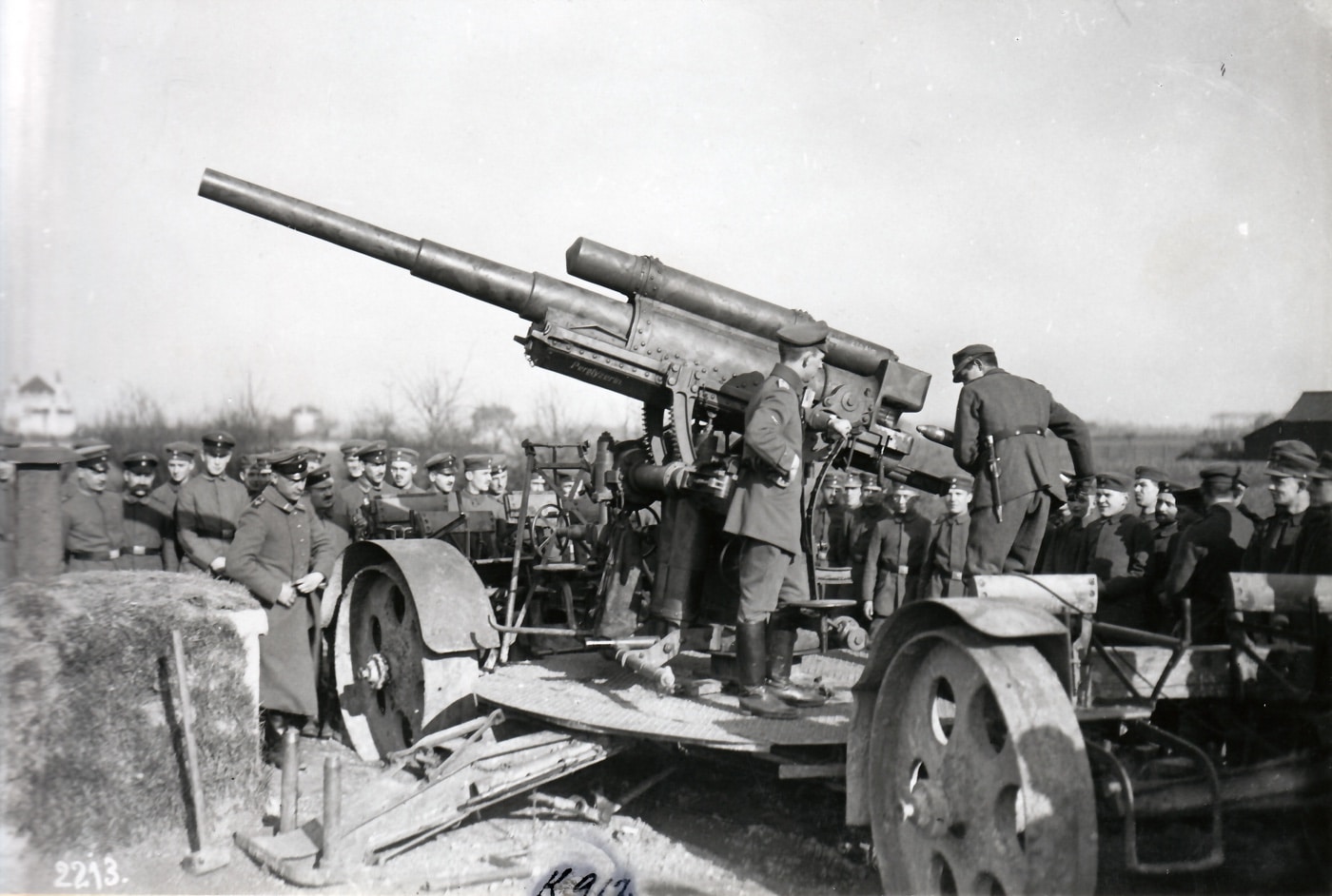
Interestingly, the 1918 Armistice restrictions created some foreshadowing for the dual-purpose use of the later 88mm guns. Under the terms of the Treaty of Versailles, the “Reichsheer” was not allowed to possess specific anti-aircraft guns. However, some of the K-Zugflak guns had their AA sights removed and were kept in service as ground artillery — serving in Reichsheer motorized artillery batteries.
8.8 cm Flak 18 Guns in the Condor Legion
A small number of 8.8 cm Flak 18 guns were sent with the Condor Legion to assist Franco’s Nationalist Forces in the Spanish Civil War. Initially intended for use as just an AA gun, the Flak 18 was among the most powerful artillery pieces in Spain, and opportunities quickly presented themselves for its use in the ground role — particularly against tanks.
The Soviet Union had provided the Spanish Republicans with T-26 infantry tanks and BT-type cavalry tanks, and these vehicles were particularly effective at first due to the limited anti-tank weapons of the Nationalist forces. By 1938, specific armor-piercing ammunition was developed for the Flak 18, and its initial use proved exceptionally promising (a total of 71 Flak 18s were allocated to the Condor Legion).
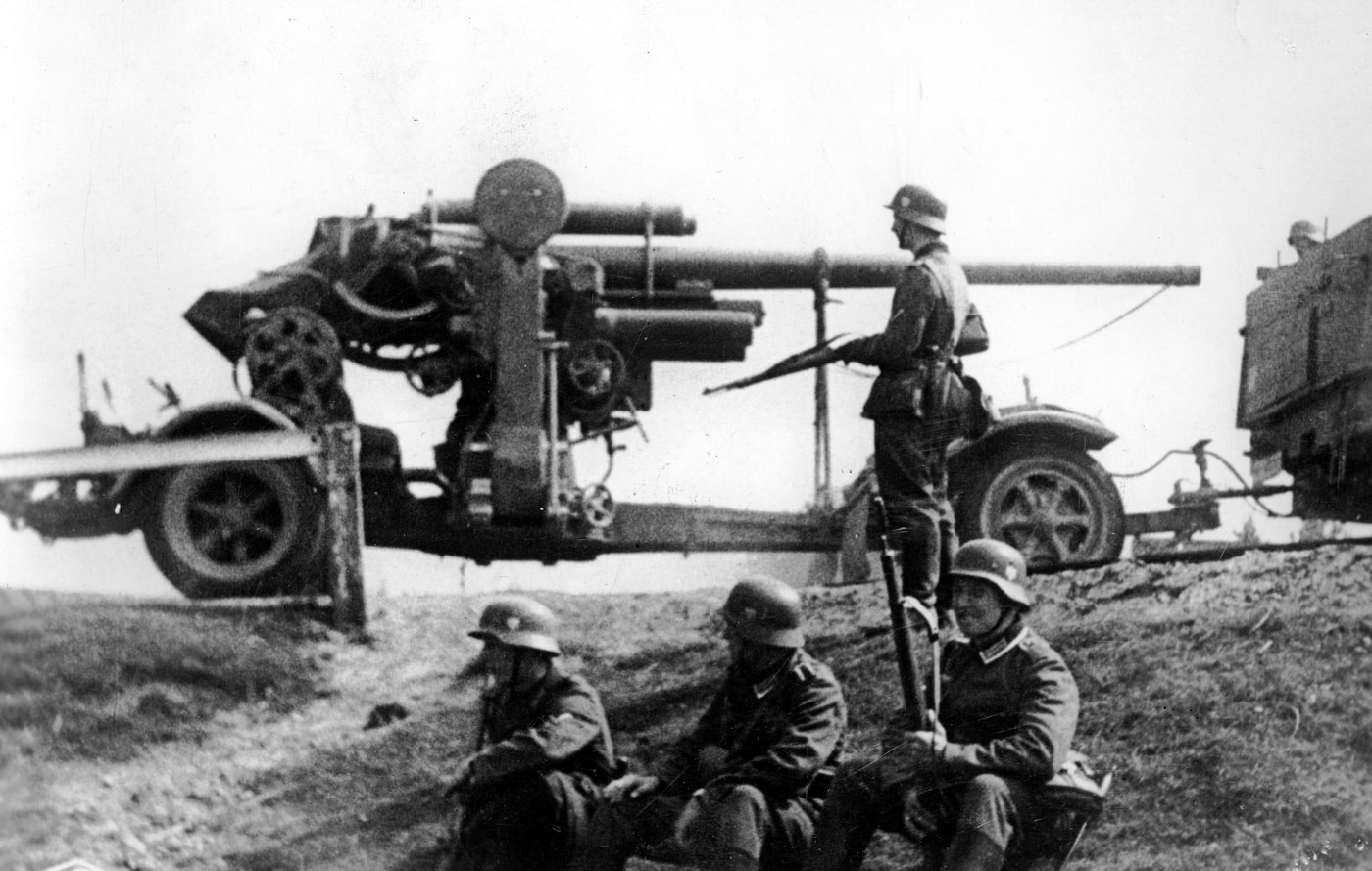
In Spain, the Flak 18 was also used effectively as a bunker-buster at Bilbao, Brunete, Ebro and in Catalonia. One modification, brought about by using the 88mm gun against ground targets, was the addition of a tall, armored shield to protect the crew against gunfire and shrapnel.
By the end of the Spanish Civil War, the Germans saw the value of the 88mm gun as a dual-purpose weapon, whereas most Allied military observers simply saw it as a modern AA gun.
Tank combat in the Spanish Civil War was an important preview of what was to come in the initial stages of World War II, but it made little impression on military planners in England, France and America. The Germans were careful with the Flak 18 in Spain, and a French intelligence report noted that “great secrecy” surrounded their operations.

Early in World War II, the 88mm Flak 18/Flak 36 guns provided anti-aircraft protection for the fast-moving Panzer forces and began to show the dual-purpose nature of the weapons. Film footage of the German advance in Belgium during May 1940 shows several 88mm guns lined up to provide artillery fire against fortifications along the Albert Canal.
In the battle of France, the high-velocity 88mm guns were used against certain forts of the Maginot Line, and also came to the rescue of German armored forces when they were counterattacked by heavily armored Allied tanks like the French Char B1 bis (60mm frontal armor) and the British Matilda II (78mm frontal armor). These tanks were essentially impervious to Germany’s primary anti-tank gun, the 37mm Pak 36, and there was much distress, even panic, as the Matilda II tanks slammed into the German 7th Panzer Division at Arras on May 21, 1940.
It took the efforts of the division commander, General Erwin Rommel, to organize a gun line of 105mm howitzers and 88mm guns to eliminate the threat. This experience would stay with Rommel, and he would help devise the anti-tank methods that would make the 88mm guns famous during the fighting in North Africa.
Tank-Killer in the Desert
During the battles in North Africa, the German “Afrika Korps” was usually at considerable disadvantage in the numbers of tanks they could employ at any given time. Coupled with that, their tenuous supply lines often left Rommel’s troops with sorely limited fuel and ammunition.

The great equalizer, and in many ways the German’s competitive advantage, came in the form of the 8.8 cm Flak 18/36, and the innovative and aggressive way they used the world-beating dual-purpose gun.
The following report from the U.S. Military Intelligence Service’s “Tactical and Technical Trends” (June 1942) provides an excellent description of the Afrika Korps’ outstanding use of the 88mm gun in Libya during early 1942. Note that the Allied intel agencies continue to refer to the weapon as an AA gun, and don’t yet fully realize the dual capabilities of the system:
The Effectiveness of the German 88 MM Anti-Aircraft Gun as an Anti-Tank Weapon in the Libyan Battle
Recent cables from American military observers in Cairo and at the front with the Eighth British Army in Libya stress the important role being played by the German 88 MM anti-aircraft gun in the ground phase of the desert battles now in progress.
The effectiveness of this weapon as a tank destroyer was rather clearly apparent in the course of the November and December British Libyan offensive. One of our observers at that time stated in an official report that: “the 88 MM was the most feared weapon which the British tanks had to face, and that the destruction wrought by it, on both chassis and turret of the British tanks, was incomparably greater than that caused by any other Axis weapon.”
The characteristics of this gun are as follows:
- Muzzle velocity: 2,750 feet per second
- Weight of shell: 19.8 pounds
- Vertical range: 37,000 feet
- Horizontal range: 16,000 yards
- Weight in firing position: 5.2 tons (The gun is tractor-drawn)
It is provided with a steel shield of unknown thickness.

An American military observer, who had many opportunities to witness this gun in Germany in 1940, speaks of this weapon as follows:
The 88 MM is basically a gun for firing on moving targets. The crew is also specially trained for firing on highly rapid-moving targets, primarily on airplanes. The whole control apparatus is designed for fast-moving targets with a very rapid rate of fire: 25 rounds per minute. The gun is capable of great volume fire and extreme accuracy against moving targets of any type. It is equally efficient on targets on the ground as well as in the air. For attacks on armored vehicles, it is provided with a special armor-piercing shell.
The 88mm Gun in Use
The German 88mm anti-aircraft gun was designed and constructed in secret in the ten year period prior to the advent of Hitler, when the German army was subject to rigid personnel and material limitations. It is known that its designers planned to construct a dual-purpose anti-aircraft and anti-tank (AT) weapon. The anti-tank purpose of the weapon was, however, veiled in secrecy, and the German intentions in this regard did not become known to the world until the Polish campaign of 1939.
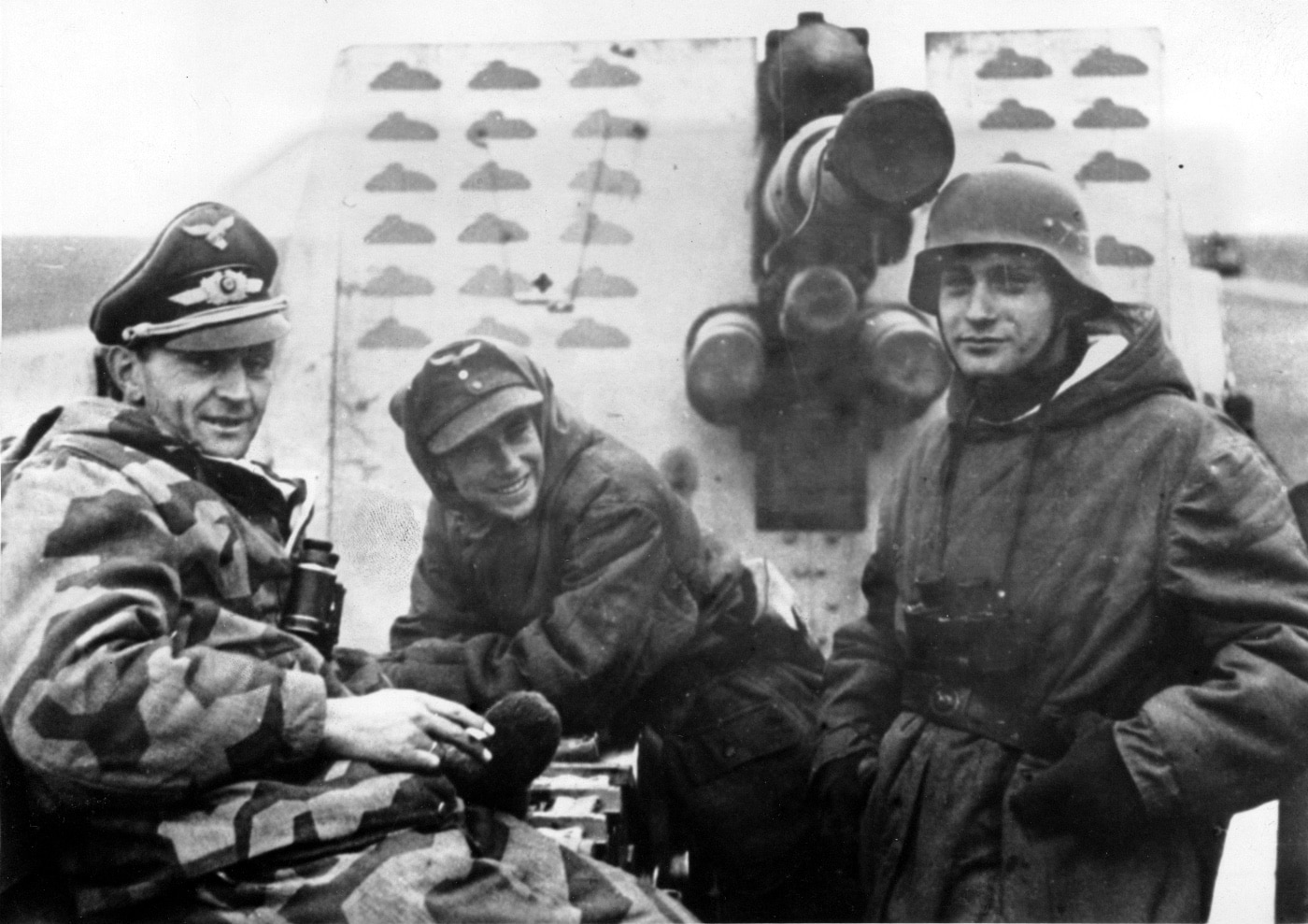
However, not only in Poland but in the French campaign of 1940 as well, Allied observers did not grasp at the time the full significance and effectiveness of this weapon.
Commencing in 1940, the Germans began to provide these guns with an armored shield in order to protect its personnel against small arms bullets as well as smaller anti-tank projectiles. It appears that this weapon has played an important role throughout the Russian campaign. However, far more exact information is available as to its use in Libya, than on the Russian battlefields.
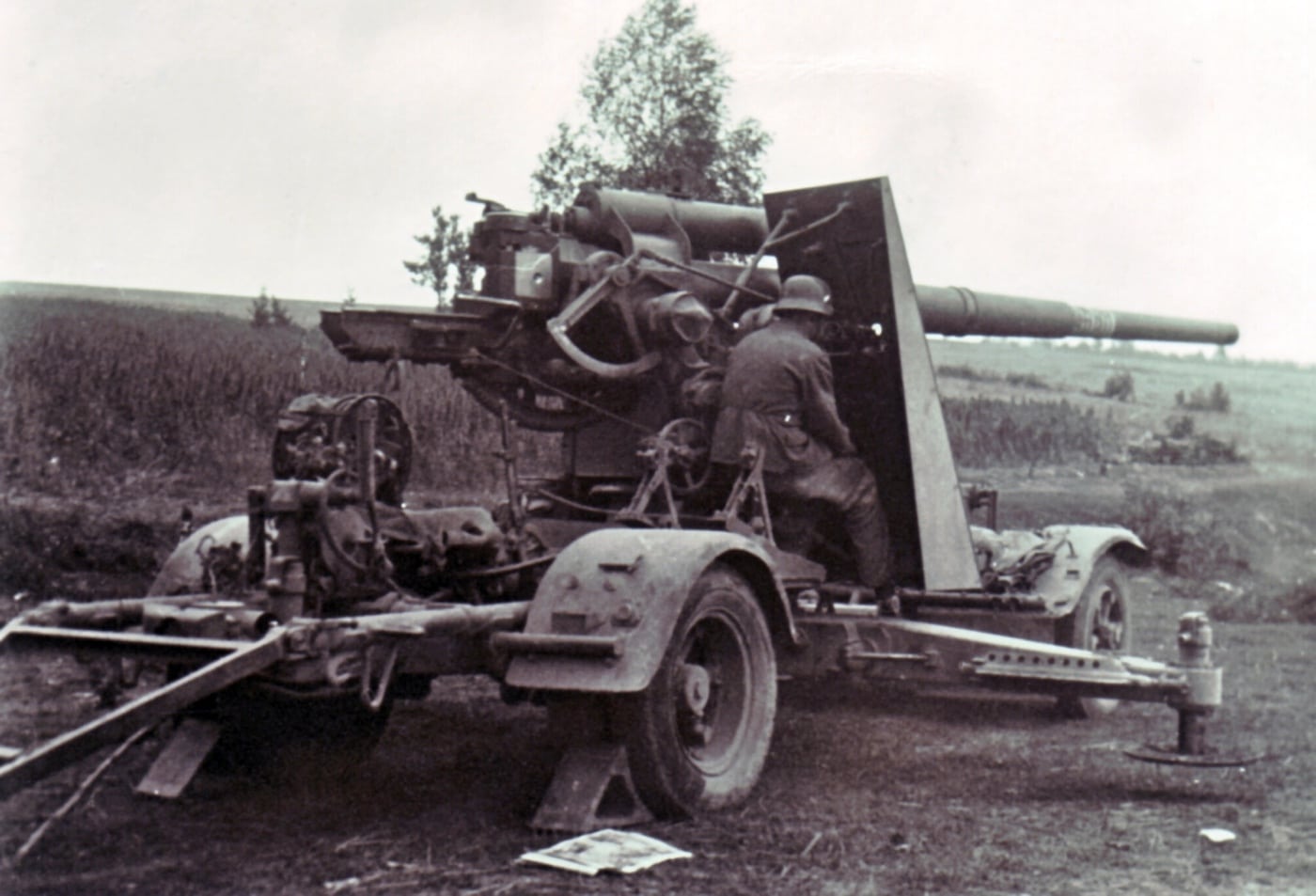
In November 1942, when Gen. Claude Auchinleck of the British Army launched his major offensive, Marshal Erwin Rommel, his opponent, created three tank-proof localities along his front line: at Bardia, Sollum and in the vicinity of Halfaya Pass. The defenses of each of these strong points were built around a battalion (12) of 88mm AA guns, so sighted as to provide all-round protection. These guns were supported by a large number of smaller anti-tank weapons.
So well organized were these strong points that they were never seriously attacked, and only fell when the British had pushed on to Benghazi and when the water and food stocks of the strong points became exhausted. The British ascribe the long resistance put up by these strong points to the difficulty they found in coping with these dual-purpose weapons.
In the battle now raging in Libya, Rommel’s offensive use of these weapons is of considerable interest. The anti-aircraft guns appear to follow closely his armored vehicles. As soon as the front begins to stabilize, the 88mm AA guns would go into position, and around them was then organized a “tank-proof” locality. The German tanks were then withdrawn for offensive operations elsewhere.
The effectiveness of these weapons is clearly brought out from the following quotations from reports of observers then at the front in the desert battle around Tobruk.
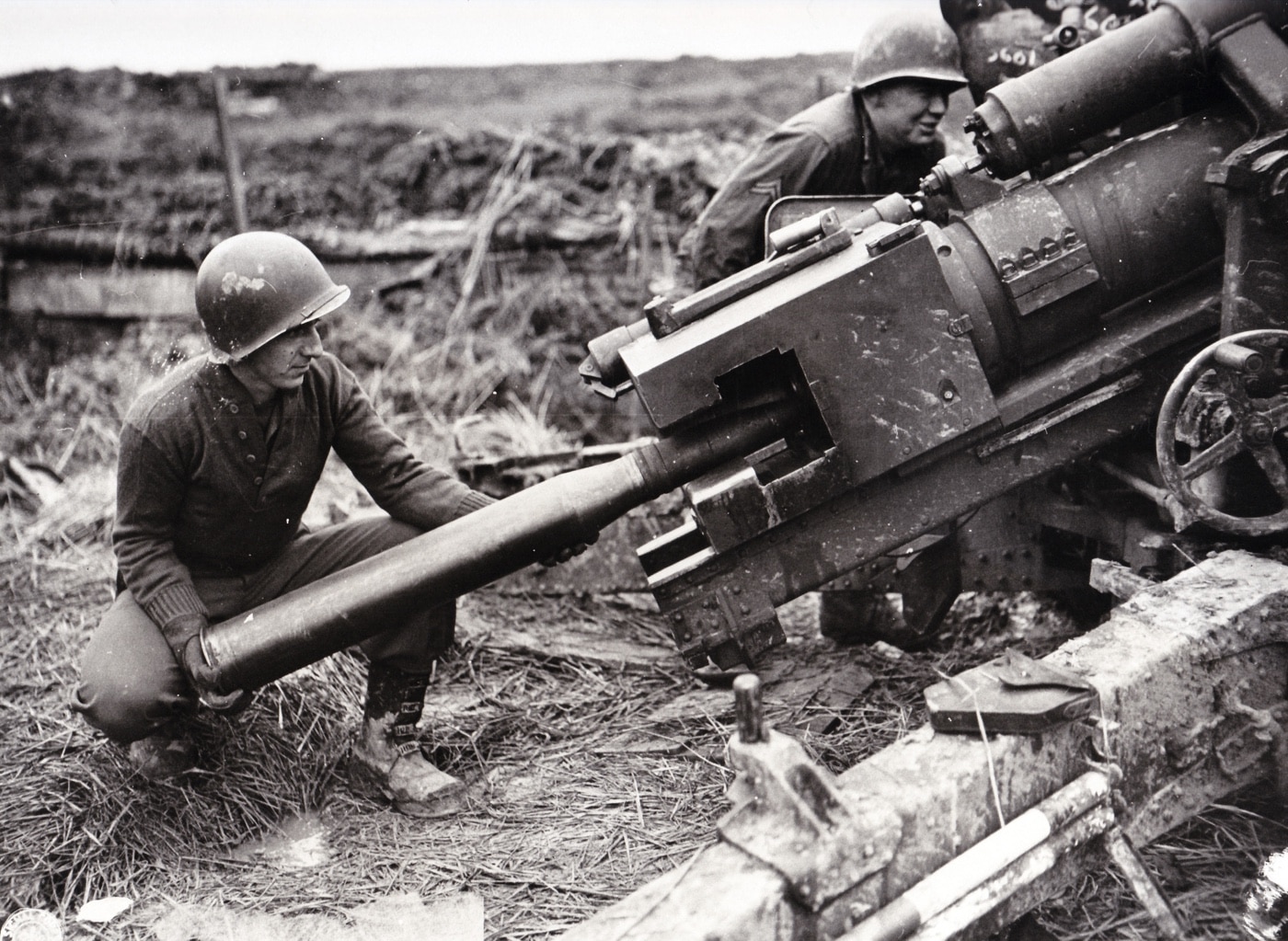
One report includes the following statement:
The German 88 MM guns penetrate the armor of all British tanks. British tanks dare not attack them. Up to now, the British seem incapable of dealing with these weapons.
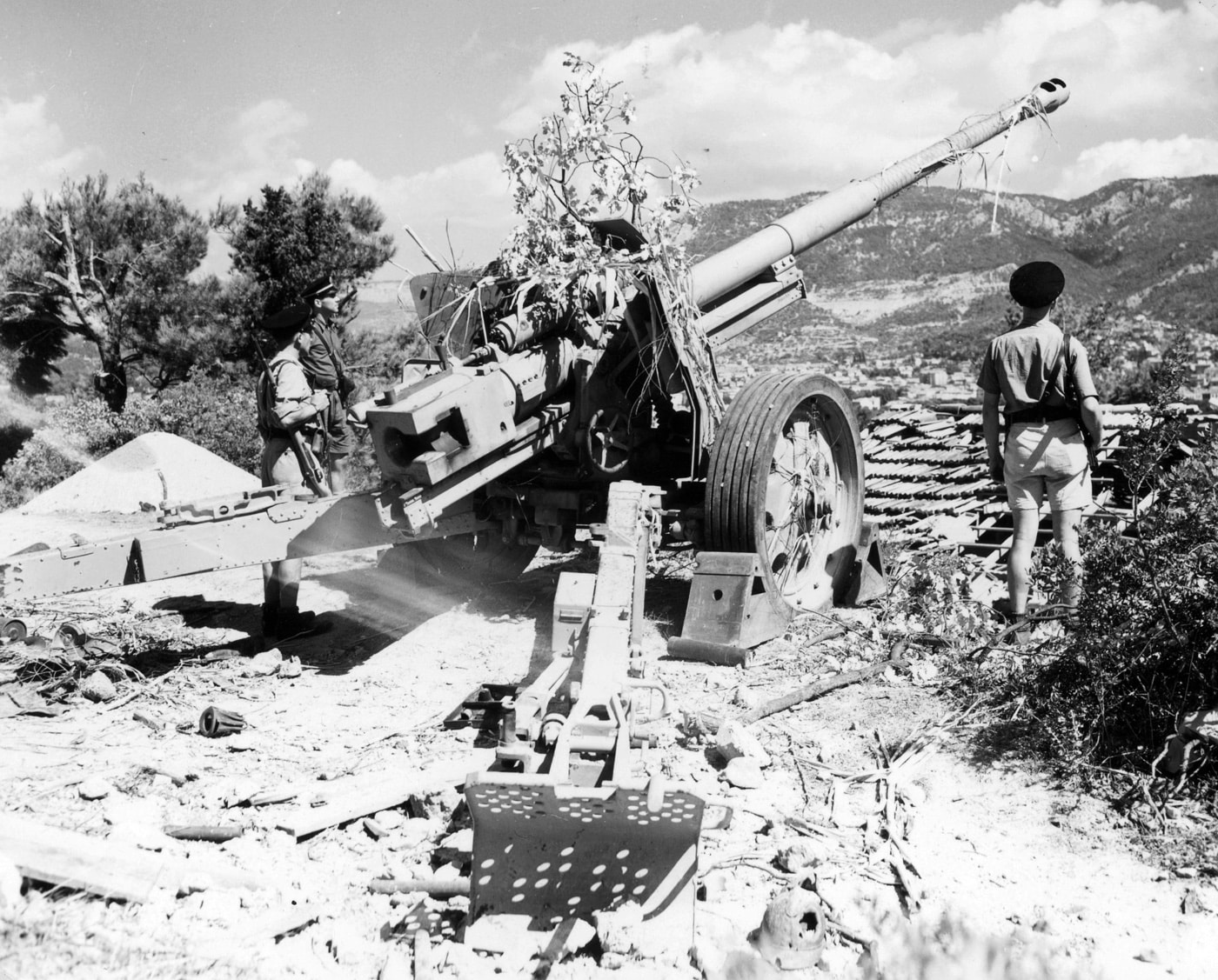
Another observer reports as follows:
At a point in the Knightsbridge area, the 4th British armored brigade faced some 35 German tanks of the Mark III and IV type drawn up in line and obviously inviting attack. These tanks were supported by a battalion of anti-aircraft guns (12). The commander of the 4th Brigade refused to attack at all because of the presence of these guns on the battlefield.
Slight firing occurred throughout the day. Towards evening the superior British tank force withdrew and the German tanks attacked after nightfall in a new direction. Their 88 MM guns had checked the British all day and permitted Rommel to seize the initiative as soon as the British threat had vanished.

Still a third report reads as follows:
The greatest single tank destroyer is the German 88 MM anti aircraft gun. For example, on May 27th at 8:00 AM, Axis forces having enveloped Bir Hacheim, a German tank force of sixty tanks attacked the British 22nd Brigade some distance to the northeast. The British moved to attack this force with 50 light and medium American tanks. It soon became apparent that this British force was inadequate, and the Brigadier commanding ordered a second regiment of 50 tanks into action.
In ten minutes the 88 MM German AA guns destroyed 8 American medium tanks of this reinforcing regiment’. All day thereafter, the British engaged the enemy half-heartedly and finally withdrew. Sixteen American medium tanks were lost in all. These sixteen fell victims without a single exception to the 88 MM AA gun.
Performance of the Guns Against Hard Targets
The following penetration figures for the German 88mm dual-purpose gun, using armor-piercing shell against armor and concrete, have been obtained from a captured German document. The angle of attack is given as 70 degrees. The quality of armor attacked is not stated, but it is believed to be of standard German specifications:
Dominance as an AA Gun
The German 88mm guns received so much notoriety in the anti-tank role, that their abilities as anti-aircraft weapons are often overlooked. Regardless of their success against ground targets, the 88mm family of guns represented some of the deadliest flak weapons of all time.
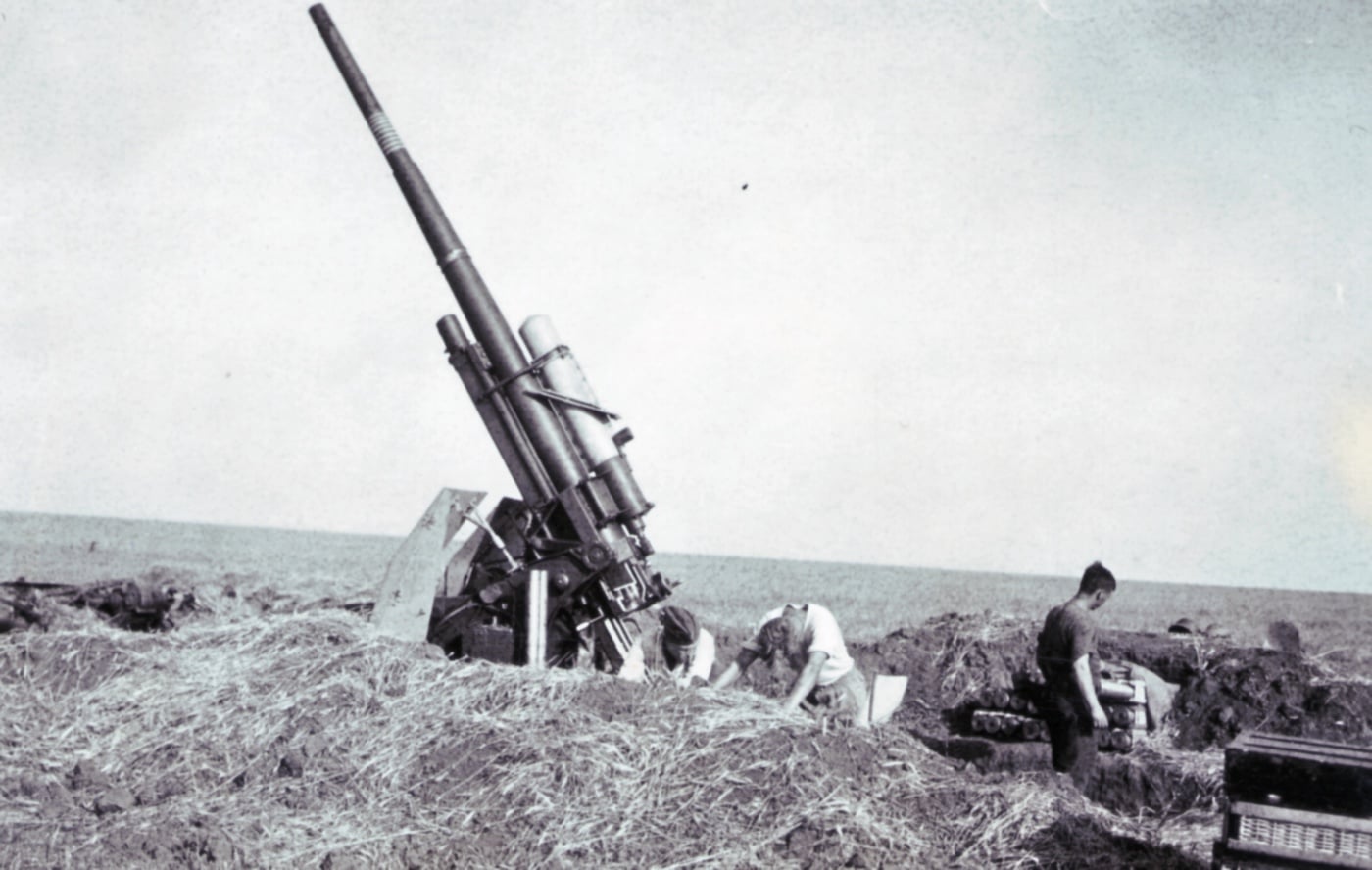
The 88mm gun entered service in 1917 as the “8.8 cm K.Zugflak L/45” (often abbreviated to K-Flak). The K-Flak used a semi-automatic, sliding wedge breech designed by Krupp, giving the weapon a respectable rate of fire of 10 rounds per minute. With a vertical range of up to 22,000 feet and a shell weight of 20.75 pounds, the K-Flak was a highly effective weapon by World War I standards.
After a flirtation with a 75mm design (the 7.5 cm Flak L/60), the Germans renewed their 88mm development. The result was the 8.8 cm Flak 18, which was an unqualified success. The Flak 18 had a semi-automatic breech and used a mechanical fuse-setter.
Its fire control came via a central transmission system, and its pedestal mount was equipped with leveling controls. The maximum ceiling was 32,000 feet, with an effective ceiling of 26,000. The normal crew was made up of a gun commander and nine men.

The Flak 36 was almost identical to the Flak 18, and the Flak 37 quite similar, with the exception that its new data transmission system. All three variants combined to create the backbone of Germany’s AA defense throughout WWII.
From an anti-aircraft perspective, the best of all the 88mm guns came in the form of the Flak 41, first conceived in 1939, and finally debuted in 1943. Originally designed as a dual-purpose AT/AA weapon, the Flak 41 used a turntable carriage instead of the usual pedestal mount of its predecessors. Troublesome complexities, like a separate firing circuit for ground use, and the need for continuous skilled maintenance, made the Flak 41 less than desirable in the field. However, the gun’s fantastic performance in the AA role (firing at up to 25 rpm) meant that all available examples were returned to the Reich and emplaced near strategic targets.
The Flak 41 was expensive to produce, and its need for specialized service obscured what was one of the finest flak weapons of the entire war. Its maximum ceiling was 49,215 feet — the highest of all the German flak guns.
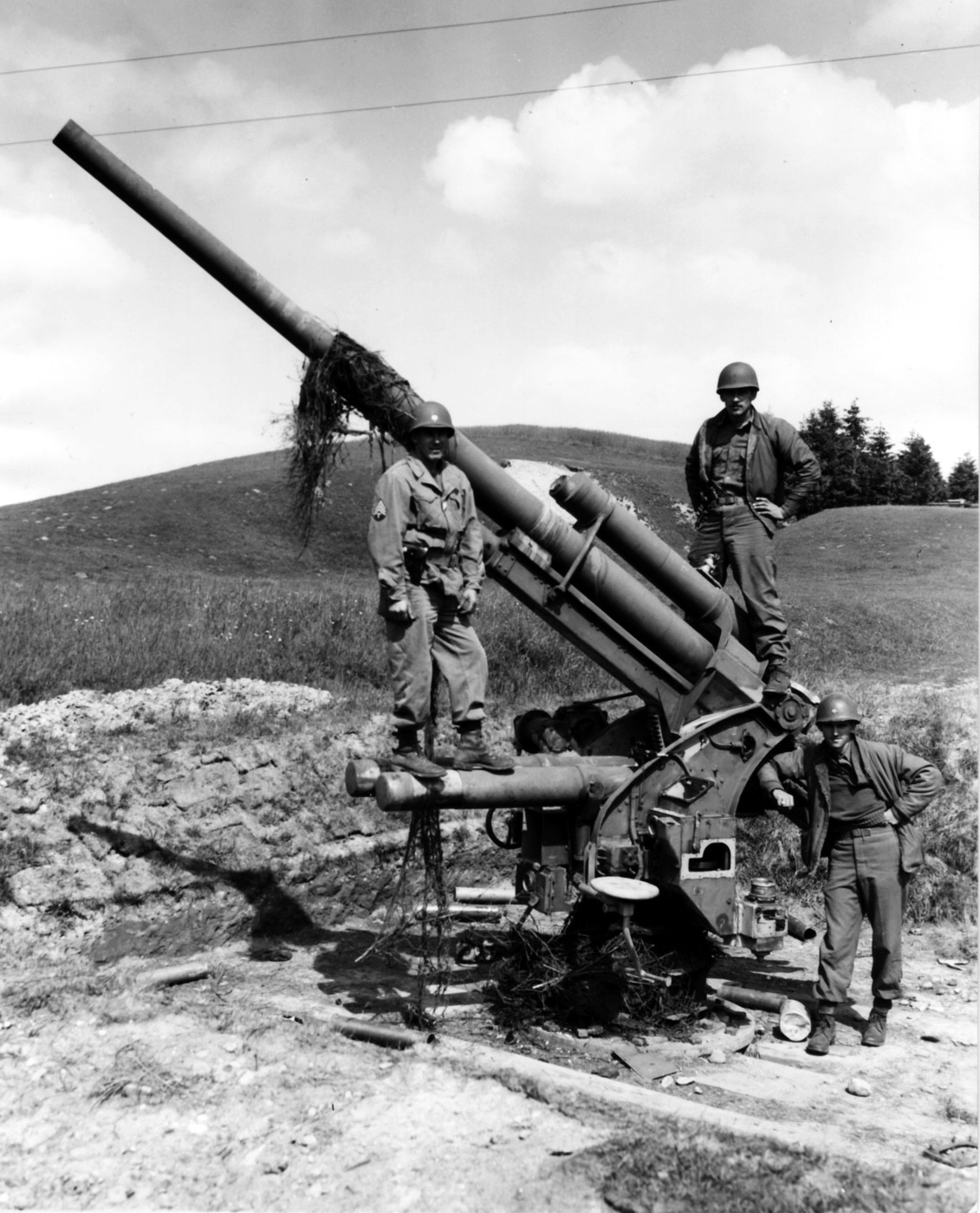
A U.S. Army Air Force report created shortly after WWII revealed that 43% of the 18,418 American aircraft lost in the war against Germany were brought down by flak. That total could have been much higher, but the German anti-aircraft defenses were held back by a lack of manpower, amount of guns and by ammunition shortages. The 8.8 cm guns and their shells were expensive — and in early 1944 flak crews were forced to restrict their firing. German leaders were forced to strip away guns from cities defined as “less important” to concentrate AA weapons around Berlin as well as industrial centers in the Ruhr.
Even so, the effectiveness of the 88mm crews advanced throughout the war. In 1944, German estimates showed that flak accounted for almost one-third of all Allied aircraft shot down and two-thirds of all those damaged.
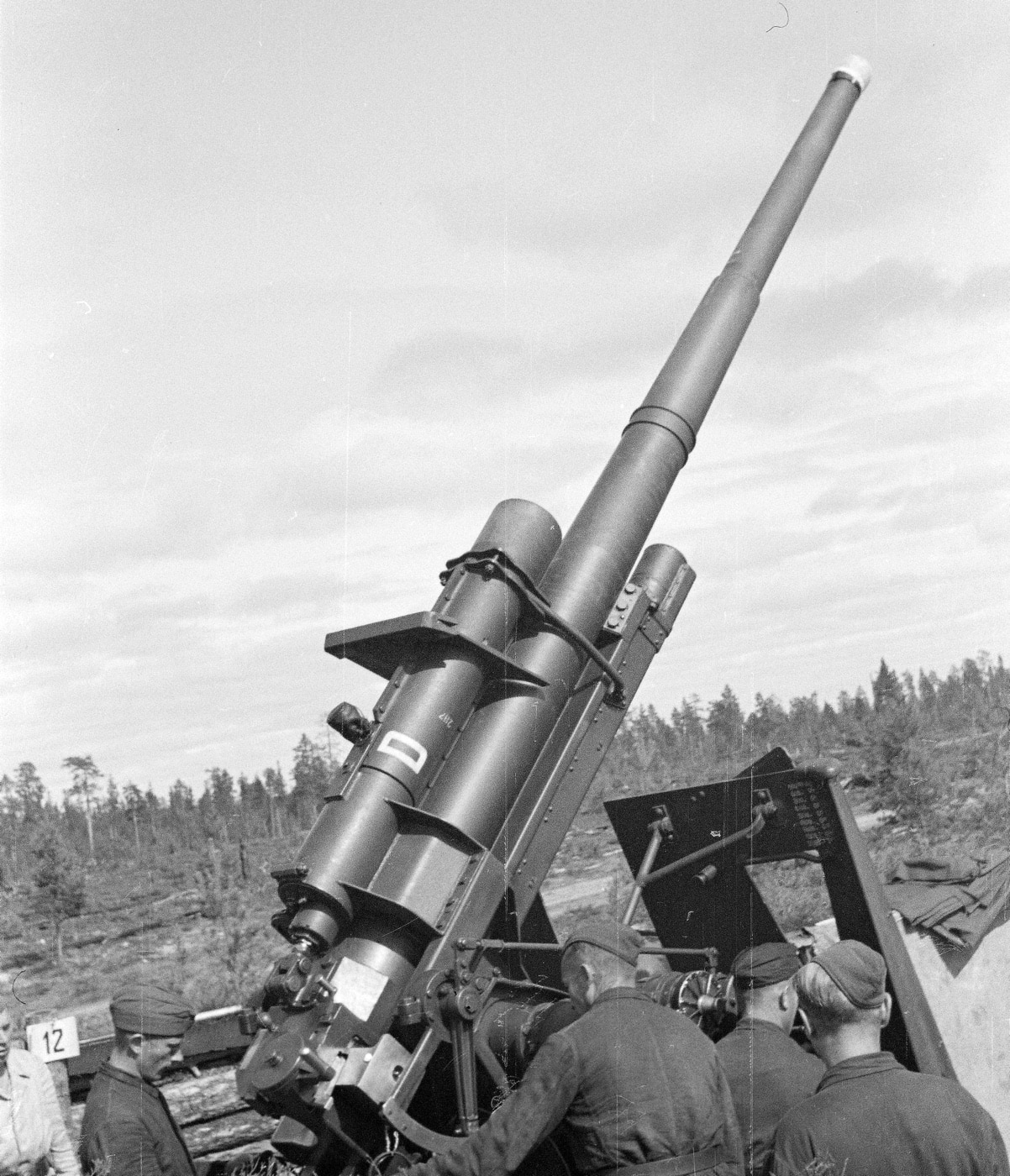
More firing meant more hits. According to German estimates, it took 8,000 flak shells (of all types) to bring down one bomber. As good as the 88mm guns were, AA defense was a numbers game that the Third Reich could not afford.
Facing Them Down
As U.S. forces pressed deeper into Germany, the troops were experiencing the 88mm guns acting in their dual-purpose role as the G.I.s pressed up against large flak concentrations. “Flak Facts,” a U.S. Army Air Force Report, described the 88mm guns:
Capable of shooting 20 rounds per minute, this gun made up 80% of Germany’s heavy flak defenses, protecting all important industries, communication centers, supply points, bridges, etc. More than 1000 heavy flak guns were used in the defense of the Ruhr. The “Bogie” of airmen and tankers alike, this dual-purpose gun was the mainstay of Germany’s heavy flak defenses, capable of firing effectively to a height of 35,000 feet or of piercing five inches of armor at 2,000 yards.
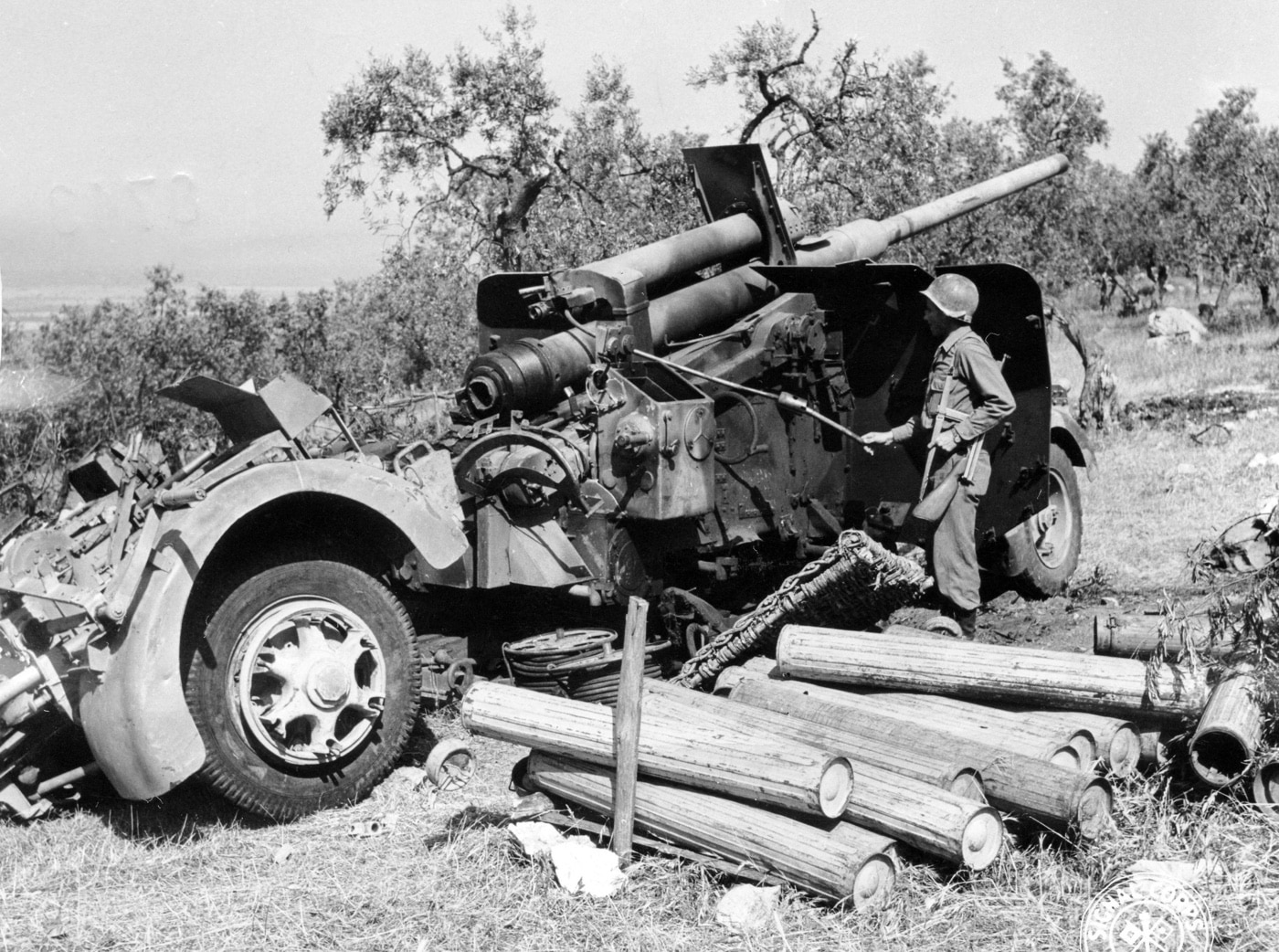
German General von Rantzau, commander of Flakkorps III, described the responsibilities of his weapons and their crews during the fighting within the Ruhr Pocket, March-April 1945:
Moreover, the antiaircraft artillery was to fight the enemy fighter-bombers with light and medium weapons, and the heavy guns were to be kept in reserve on account of the ammunition shortage. Beyond that, the commitment against enemy tank assaults was, at the same time, to be given priority everywhere.
In Belton Cooper’s “Death Traps: The Survival of an American Armored Division in World War II” (1998 Presidio Press), Cooper describes the 3rd Armored Division’s final assault on Paderborn, Germany, and overcoming the 88mm flak batteries positioned around the city:
As our task forces proceeded to the airport, they encountered heavy fire from 88mm dual-purpose guns. Although these guns could be lowered from vertical to horizontal for use as anti-tank fire, their high profile made them difficult to protect. The Germans would stack sandbags about five feet high in a ring around each gun, but the tops were completely open and they were vulnerable to artillery fire. By rapid deployment of our M7s, we put a few rounds with proximity fuses over each gun emplacement. The downward blast killed the crew and neutralized the gun. With the 88mms neutralized, our tank columns enveloped the airport and proceeded into the city.
The Myths and Reality of the 88mm Legend
As the “88” grew in fame, the weapon was redesigned as a specific anti-tank gun, the advanced (but expensive) Pak 43, and later the powerful but cumbersome Pak 43/41. The 88mm was mounted on several armored vehicles, including the greatly feared Tiger tank.
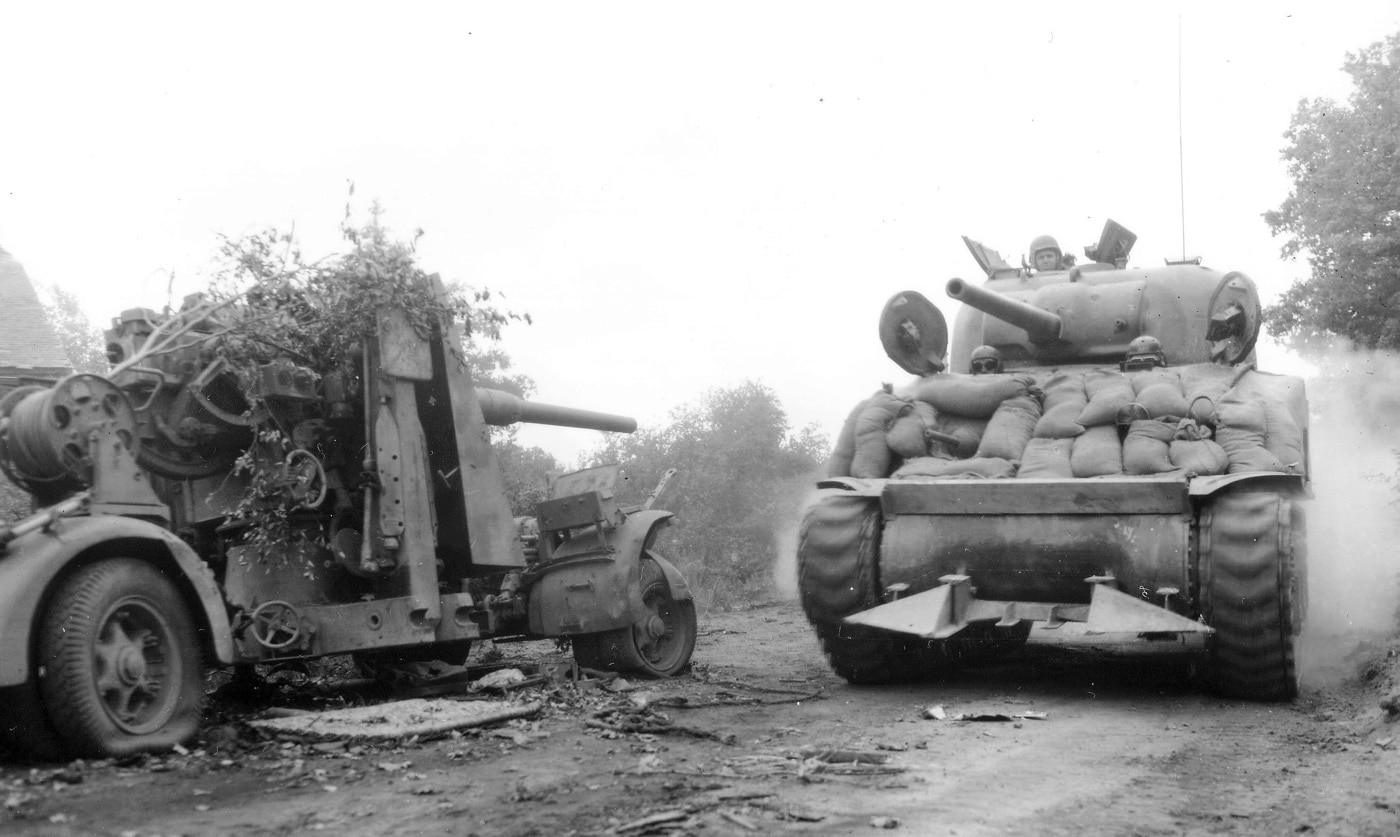
This began with the slightly shortened 56-calibre long 88mm KwK 36 gun on the Tiger I in 1942, and culminated with the 88mm KwK 43 L/71 gun on the Tiger II “King Tiger” variant in 1944. Allied tankers spoke openly of their fears of the weapon and nicknamed it “88 fever”.
There really aren’t any myths to bust about the German 88mm guns.
They began the war as a relatively unknown weapon, by 1942 they had become famous, and by the end of the war they had become legendary. There was no Allied armored vehicle developed during the war that could resist their armor-penetrating ability at normal combat ranges. Destruction by a whistling 88mm AP round became a deadly fact of life. In the skies above, 88mm flak weapons fired effective AA rounds into Allied bomber streams.
In the history of warfare, there have been few weapons to reach such a high level of killing efficiency. Even so, wars are won by a coordinated team effort, and the Allies found the tools, tactics, and the brave men to use them in defeating the best that Germany had to offer.
Editor’s Note: Please be sure to check out The Armory Life Forum, where you can comment about our daily articles, as well as just talk guns and gear. Click the “Go To Forum Thread” link below to jump in and discuss this article and much more!
Join the Discussion
Read the full article here


